The iPhone 14 Pro – which Apple unveiled at the Steve Jobs Theater in California on September 7- is, unlike the iPhone 14 and iPhone 14 Plus, about the future.
While the still attractive and, thanks to the A15 Bionic chip, still reasonably powerful iPhone 14 and iPhone 14 Plus look a lot like last year’s iPhone 13, not so with the 6.1-inch iPhone 14 Pro (and 6.7-inch iPhone 14 Pro Max).
Apple has always steadfastly defended the notch, which houses the powerful TrueDepth module – even in the face of taunts from competitors like Samsung. However, Apple had to move forward, even if it’s kind of a stutter step with half the iPhone 14 line still sporting the notch and the pricier Pro line not.
The result is the new and exciting Dynamic Island. Unlike a traditional screen cutout, this one, which sits near the top of the Super Retina XDR display, can change depending on activity.
The Pro line also gets (finally) an always-on display for that added bit of glanceable convenience, and adaptive refresh rates that can smoothly adjust from 1Hz to 120Hz.
Apple also upgraded the camera array with the main lens offering 48MP; shots will combine four pixels into one big one for better images (yes, it’s what Android phones have been doing for ages). And while the megapixels on the ultrawide and telephoto lenses haven’t changed, Apple said they’ve been updated, as has the front-facing, 12MP TrueDepth camera, which now has autofocus. All cameras will take advantage of Apple’s new Photonic Engine image pipeline.
On the inside is the new A16 Bionic chip, which has a 6-core CPU, a 5-core GPU, and a 16-core neural engine. Apple said it’s capable of 17 trillion operations per second.
Features like 4K support in Cinema Mode, crash detection, and satellite communications are copied across the iPhone 14 line.
In other words, Apple iPhone 14 Pro covers the new iPhone basics, but adds in the powerful, pro-level capability you expect, including better cameras, a feature-rich screen and the intriguing Dynamic Island.
Apple also managed to make its best iPhone better without raising the price, at least in the US. That’s called a win, but it will cost you a little extra in some markets.
iPhone 14 Pro price and availability
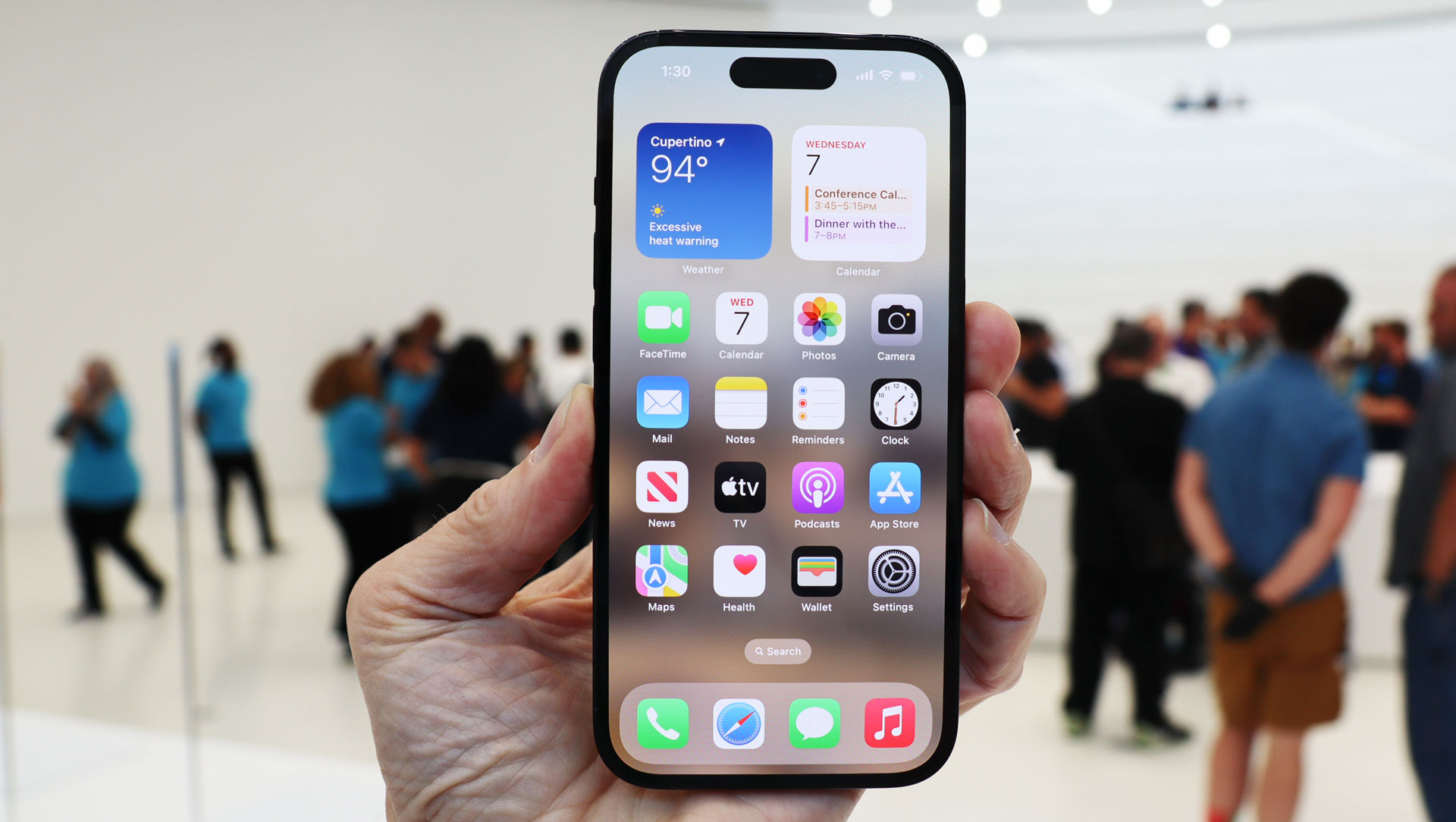
The iPhone 14 Pro starts at $999 / AU$1,749 (approximately £867) for the base 128GB model. There are storage options up to 1TB.
Pre-orders are kicking off on Friday, September 9 at 5 AM PDT / 11pm AEST and availability begins on September 16.
Design, materials, and display
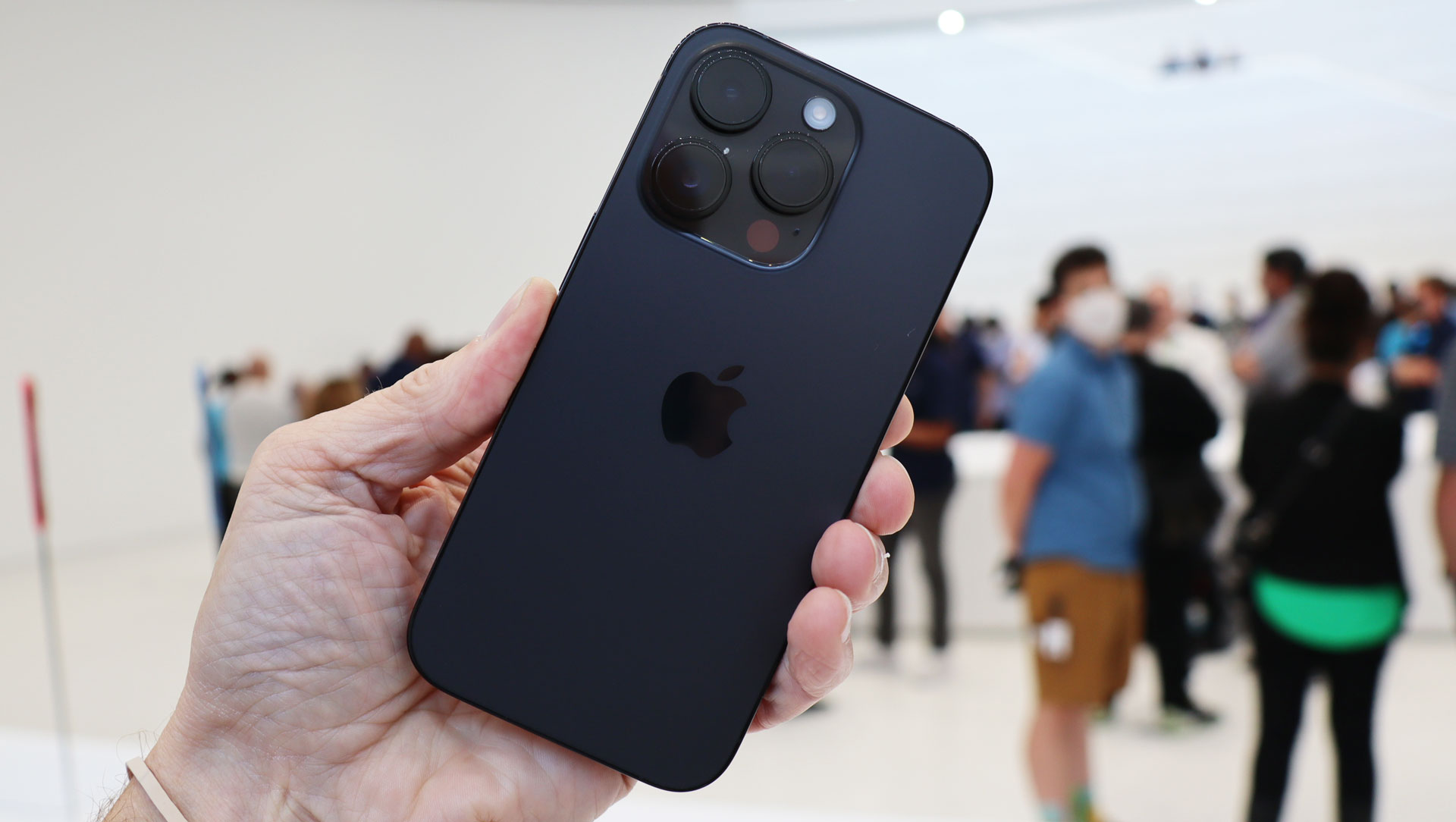
Apple didn’t throw out the iPhone 13 Pro design – which we can trace back to the iPhone 12 – on the iPhone 14 Pro. It still has the stainless steel band wrapping around the glass back and front and the now instantly recognizable square, three-camera array with the smaller LiDAr sensor. The dimensions are very close to the iPhone 13 Pro, though not quite the same. At 147.5mm x 71.5mm x 7.85mm, the iPhone 14 Pro is just slightly longer and thicker than the iPhone 13 Pro (146.7 x 71.5 x 7.7 mm). At 206 grams, it’s also 2 grams heavier.
None of this was noticeable when I held the phone. It felt very much like my iPhone 13 Pro. Perhaps the one thing that stood out, aside from the Dynamic Island (more on that later) was what’s missing: a SIM slot.
This is the first iPhone line to go all eSIM. During the presentation, Apple did its best to make the eSIM setup on the iPhone 14 Pro look easy, but this might take some getting used to, especially for those who regularly switch SIM cards on new phones. As far as look and feel go, one less port cover and a long, smooth unblemished edge are a plus in my book.
Other switches, buttons, and ports, like the power/sleep/Siri button, silence slider, volume controls, microphones and stereo speakers appear unchanged from the iPhone 13 Pro.
I am a little surprised that Apple didn’t swap out the lighting port for a USB-C charge/data port. Perhaps Apple decided that this is a task better left to the iPhone 15 or 16. By 2024, the European Union may be forcing the change anyway.
While Apple didn’t completely change the screen technology, the iPhone 14 Pro Super Retina XDR OLED display is different in a number of key ways. First, while the 460ppi is the same, the screen has slightly more pixels overall. The screen resolution is 2556 x 1179 (the iPhone 13 Pro was 2532 x 1170).
Apple significantly ramped up the brightness with a peak brightness of 2000 nits outdoors. It’s not something I could test inside Steve Jobs Theater, but all that brightness might mean your iPhone 14 Pro won’t be overmatched by the bright sun.
With the iPhone 14 Pro, we’re finally getting the always-on-display we always dreamed of. In typical Apple fashion, the iPhone 14 Pro always-on mode, which you activate by pressing the sleep button just once, looks more highly designed than most. The benefit of such a screen is, obviously, glanceable information without unlocking the phone or eating up much battery life. So far, I like what I see.
Another less obvious change is the variable screen refresh rate that can go from 1Hz to 120Hz, which means the iPhone 14 Pro is now slowing down screen redraws when it doesn’t need them and speeding up when it does. You’ll get smoother action but won’t notice when, say, reading this article on the iPhone 14 Pro that the screen looks anything other than excellent.
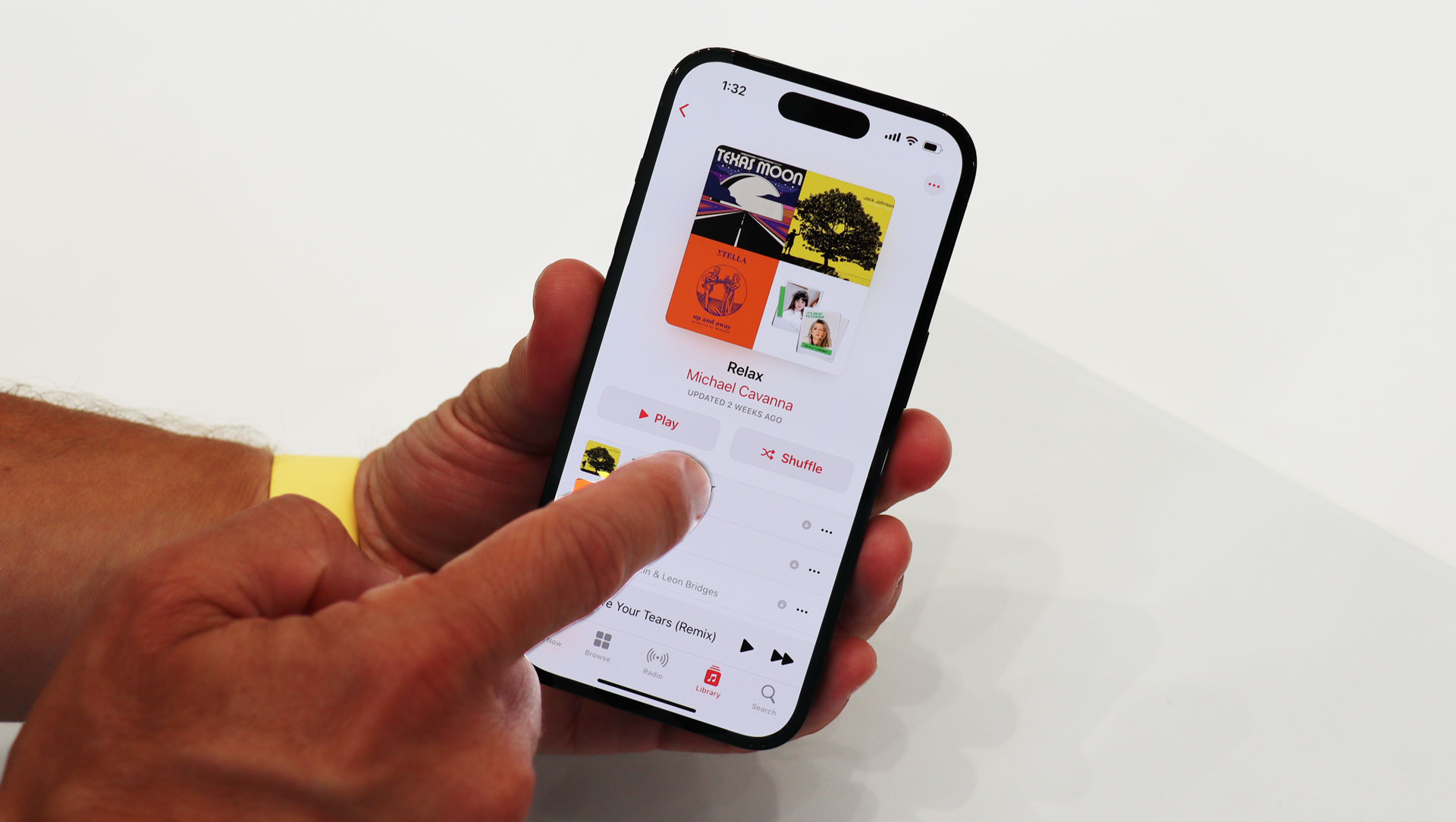
The most obvious screen change though is the notch, which is no longer a notch. Instead, we have the somewhat remarkable Dynamic Island. First, kudos to Apple for coming up with this name that simultaneously says “solitary” and “changeable”. That’s what the Dynamic Island is, a tiny moted space on the iPhone 14 Pro’s Super Retina XDR OLED display. Imagine the notch set sail from the top edge of the display, lost some baggage, and then settled a short distance from the top.
Now, the redesigned TrueDepth 12MP camera and sensor array are literally surrounded by pixels. Having a drill-through opening on a smartphone screen is not unusual. Samsung’s Galaxy S22, Z Fold 4, and Z Flip 4 all have them. However, none are like this.
Through a bit of screen magic, Apple has married the cutout to the screen, seemingly making it grow and shrink at will. That’s an illusion, though. I saw the Dynamic Island in action. It’s always the same size, but because it can be surrounded by black pixel boxes of all different shapes and sizes, and because Apple animates the transition, it looks as if the cutout is shrinking and enlarging.
The effect is even more powerful because it’s enabled, in part, by your gestures. A touch or swipe on the Dynamic Island can enable an operation and change the Dynamic Island’s shape.
I can’t tell you how wild it is to see this in action. It makes it look as if the TrueDepth module opening is made of rubber. It’s a brilliant leap of innovation and I can’t wait to spend more time testing it.
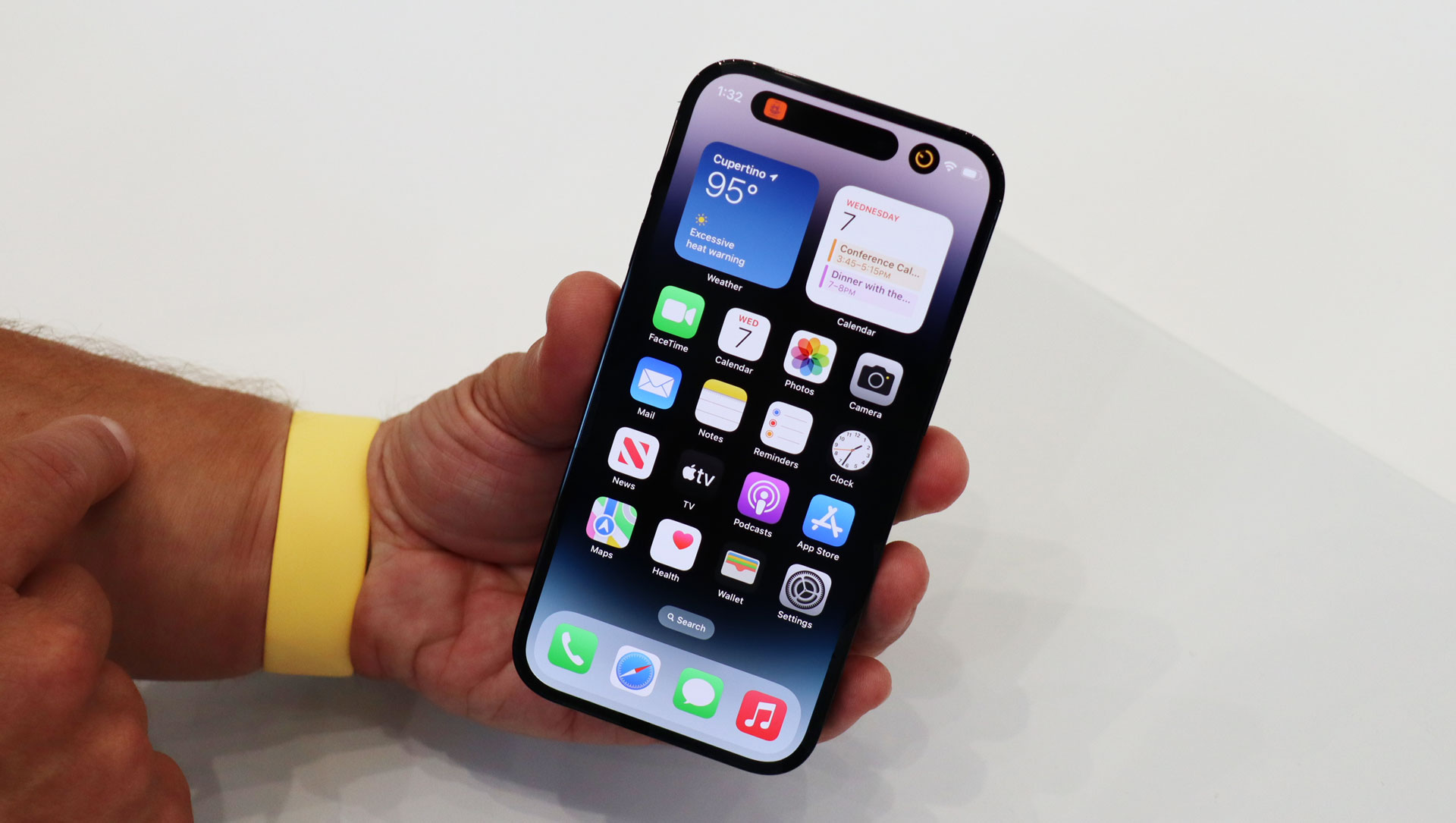
Cameras and battery life
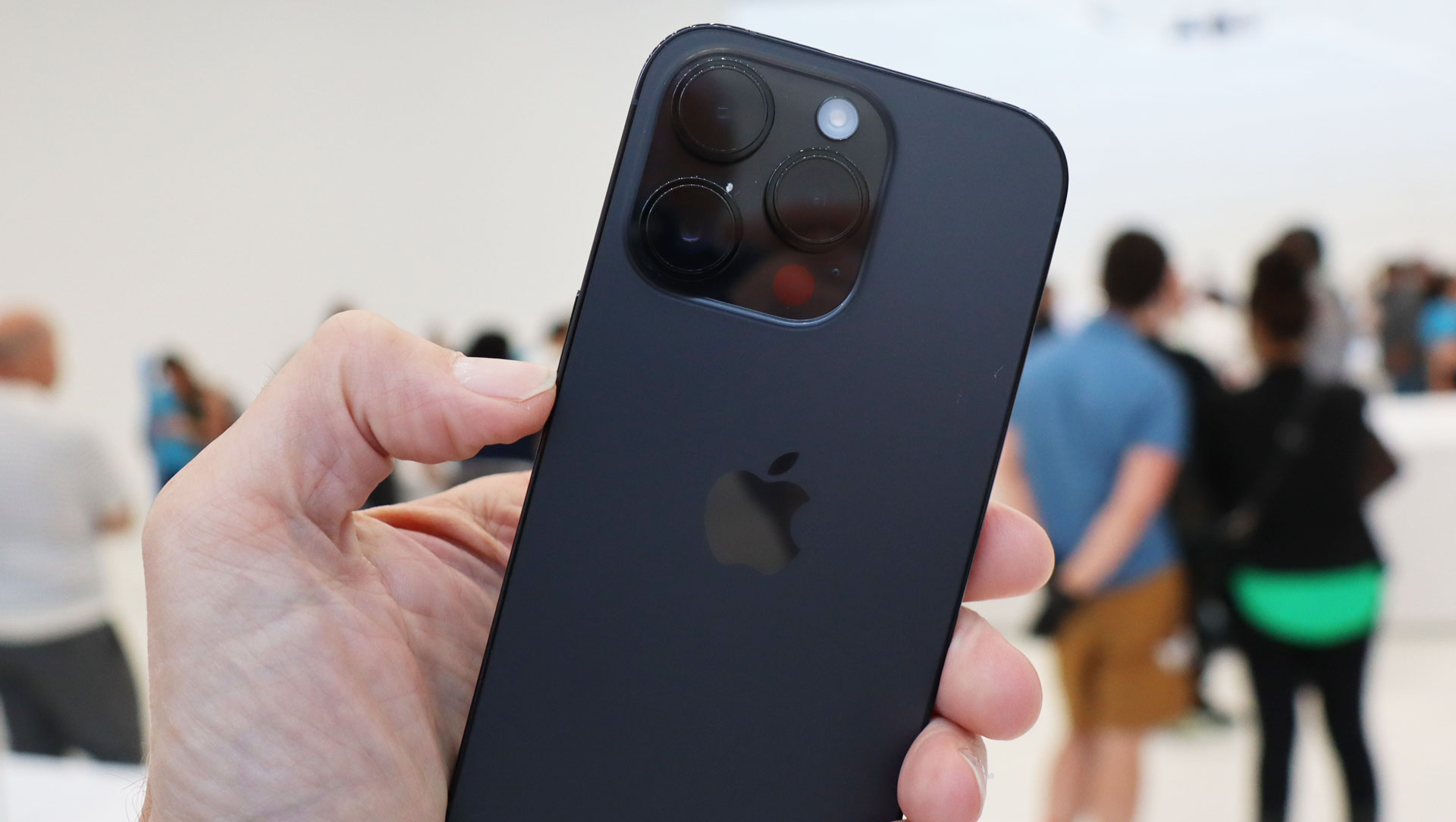
Apple has taken its dear, sweet time adding megapixels to its iPhone camera arrays. This wasn’t stubbornness or laziness, I think Apple was just perfectly comfortable relying on its lens stacks, sensors and formidable image processing to produce top-quality images. Even so, it couldn’t steer clear of megapixel multiples forever. Now we finally have a 48MP lens on the iPhone 13 Pro (and Pro Max).
There are three cameras:
● 48 24 mm, ƒ/1.78 aperture
● 12MP Ultra Wide: 13 mm, ƒ/2.2 aperture with a 120° field of view
● 12MP 3x Telephoto: 77 mm, ƒ/2.8 aperture
All of these lenses are an upgrade from the iPhone 13 Pro camera array, even if Apple didn’t upgrade the pixels on all of them.
The main camera can take four pixels and combine them into one larger one for better images and low-light photography. I know, Android cameras have been doing this for ages.
All the cameras have longer focal lengths, which moves them close to prosumer photography territory, and they’re all backed by Apple’s top-tier image processing, including the new Photonic Engine image pipeline.
Apple didn’t break any new ground on zoom length, still presenting 3X optical zoom while Samsung rolls out 10x optical zoom (and 100x space zoom) on its Samsung Galaxy S 22 Ultra. Still, Apple did do something interesting with its new 2X optical zoom option. Apparently, it takes the full 48MP sensor and zeros in on the center 12MP for optical-quality 2x and full-quality 4K video.
I tried all of these lenses and enjoyed switching from the wide angle to 1X to 2X and all the way to 3X zoom. In general, the photos I took in Steve Jobs Theater looked good. I’ll have a better assessment of camera quality when I fully test the phone.
Apple is claiming 23 hours of video playback battery life, which sounds great and I look forward to testing it. The company did not improve its fast charging capabilities. You can still get a 50% charge in 30 minutes if you use a 20W charger. I was, to be honest, hoping for more.
Performance and software
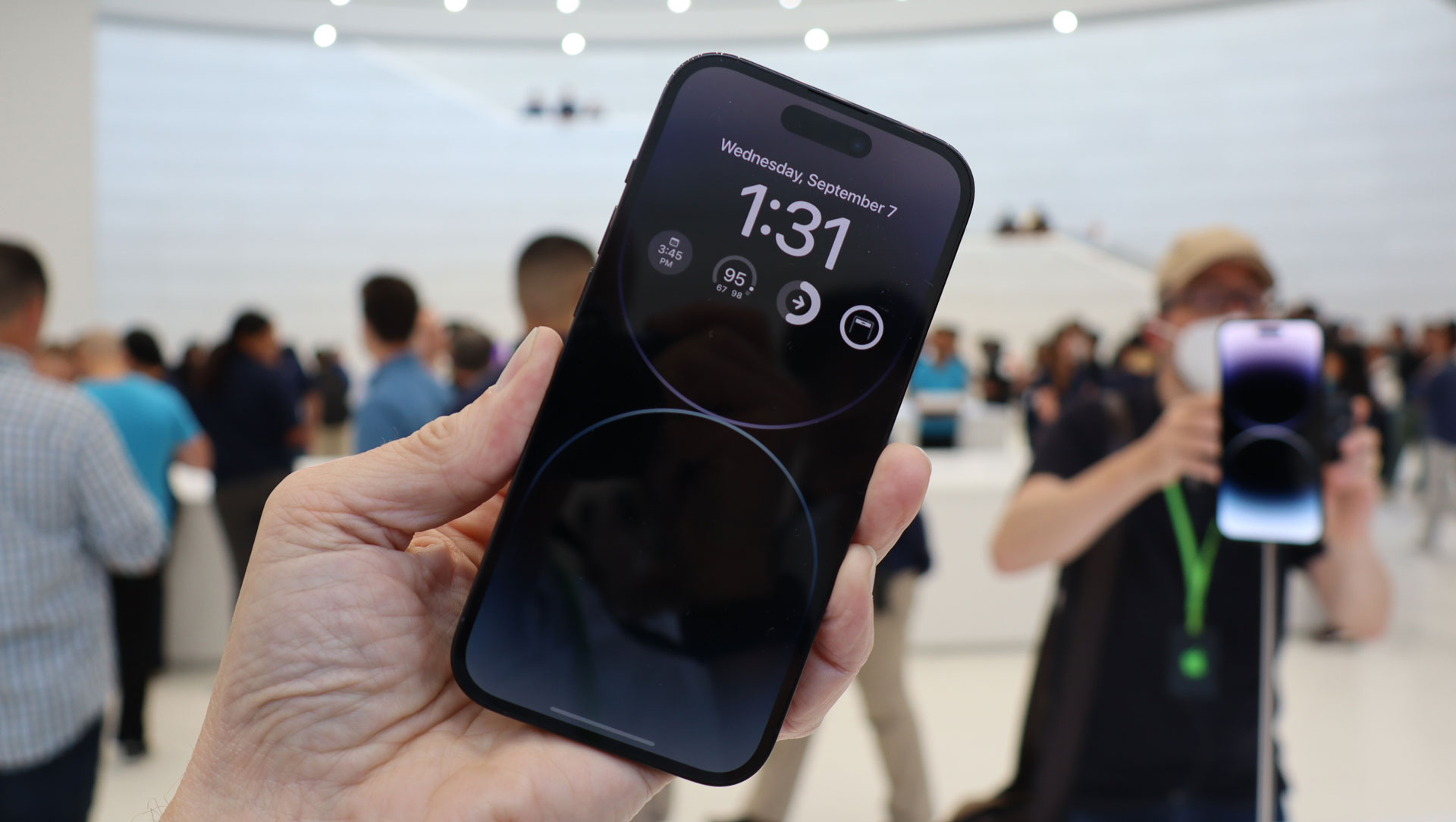
Powering it all is Apple’s new A16 Bionic chip, which has 6 CPU cores, 5 GPU cores, and a 16-core neural engine. Apple claims it’s more powerful than the previous A15 Bionic chip, which lives on in the iPhone 14 and iPhone 14 Plus.
While I have no reason to doubt Apple – its silicon is consistently leading the industry – I won’t know just how powerful it is until I test it fully. During my brief hands-on, the iPhone 14 Pro responded quickly and well to all actions and touches. That’s not much of a test, though. Stay tuned.
The other big benefit of all these new iPhone 14 phones is that they come with a brand new platform: iOS 16.
I’ve spent weeks with the iOS 16 Public beta, enjoying the new lock screen and the ability to push just a bit of my photo subject on top of the redesigned lock screen clock. The new, customizable widgets can be full of useful information, multi-stop directions on maps is awesome, and who isn’t excited about undoing your worst texting mistakes?
There’s a lot to see and use in the new OS, and I think all of it will be a value-add to the iPhone 14 Pro.
There are other features of note like crash detection and, in an industry first, Emergency Satellite SOS, both of which, if they work as advertised, could be potential life-savers.
Early verdict
Apple’s iPhone 14 Pro offers Apple’s best in silicon, cameras, screen and mobile innovation. It also feels like Apple is playing catch-up, finally waking up to the idea of pixel binning, always-on screens and adaptive refresh rates. Even so, when taken as a whole, the iPhone 14 Pro is another potentially exciting entry in a long line of iPhone innovations.
It’s definitely worth a deeper look.




